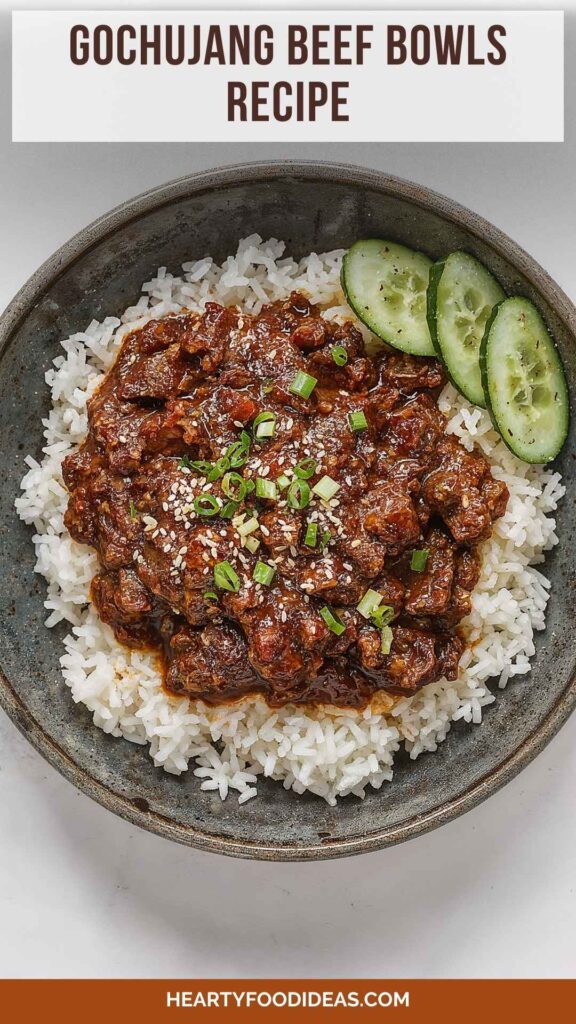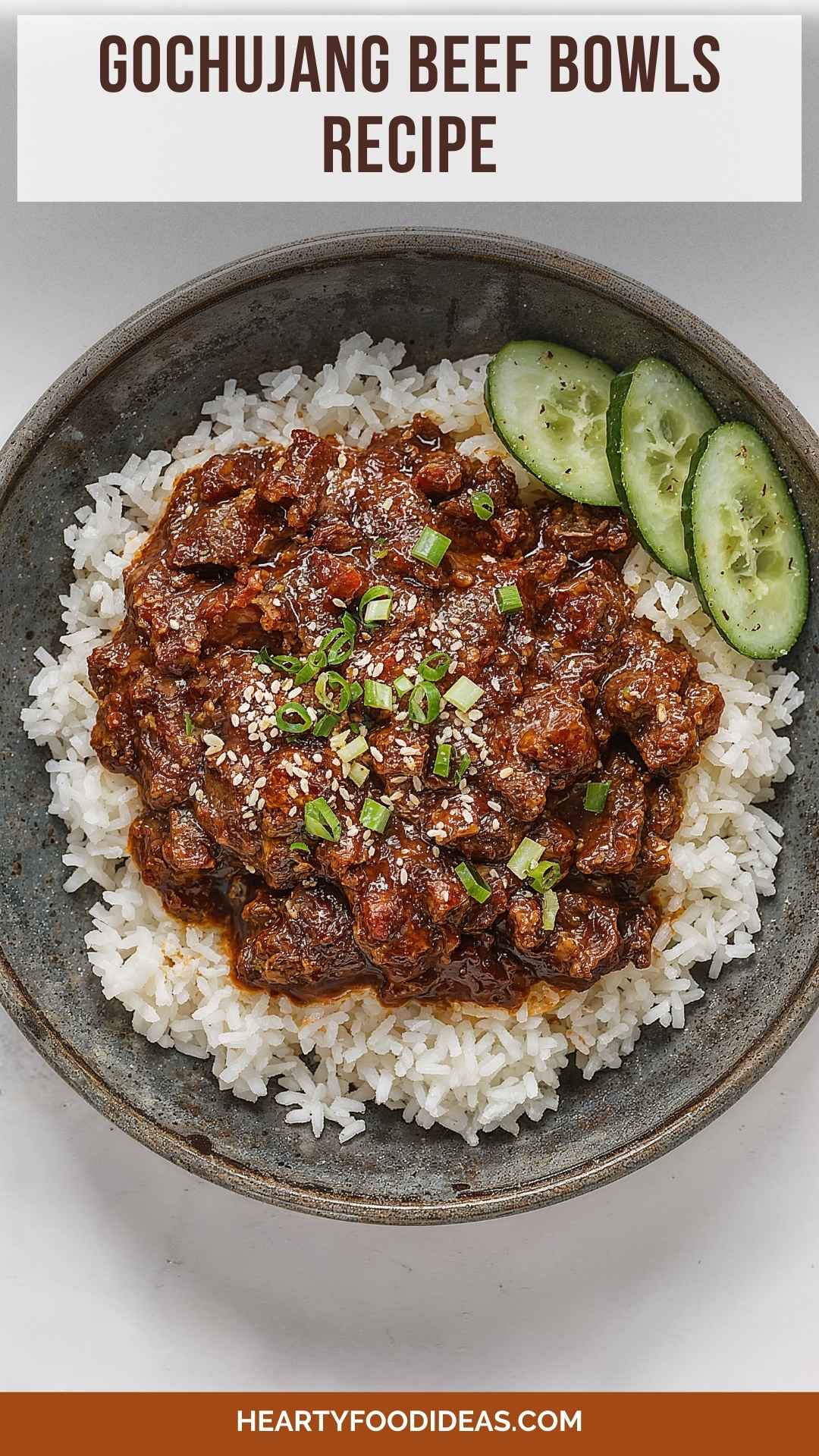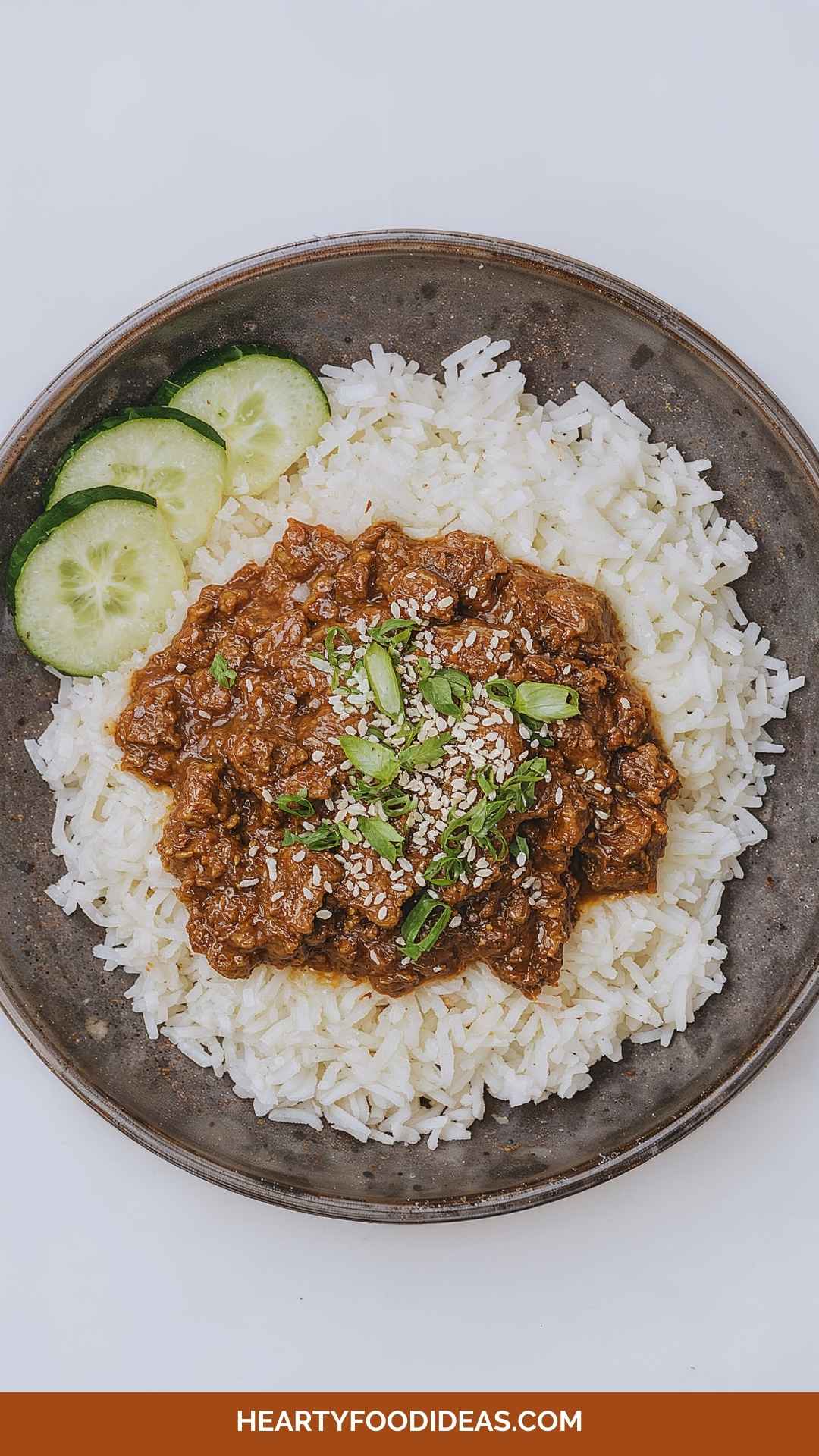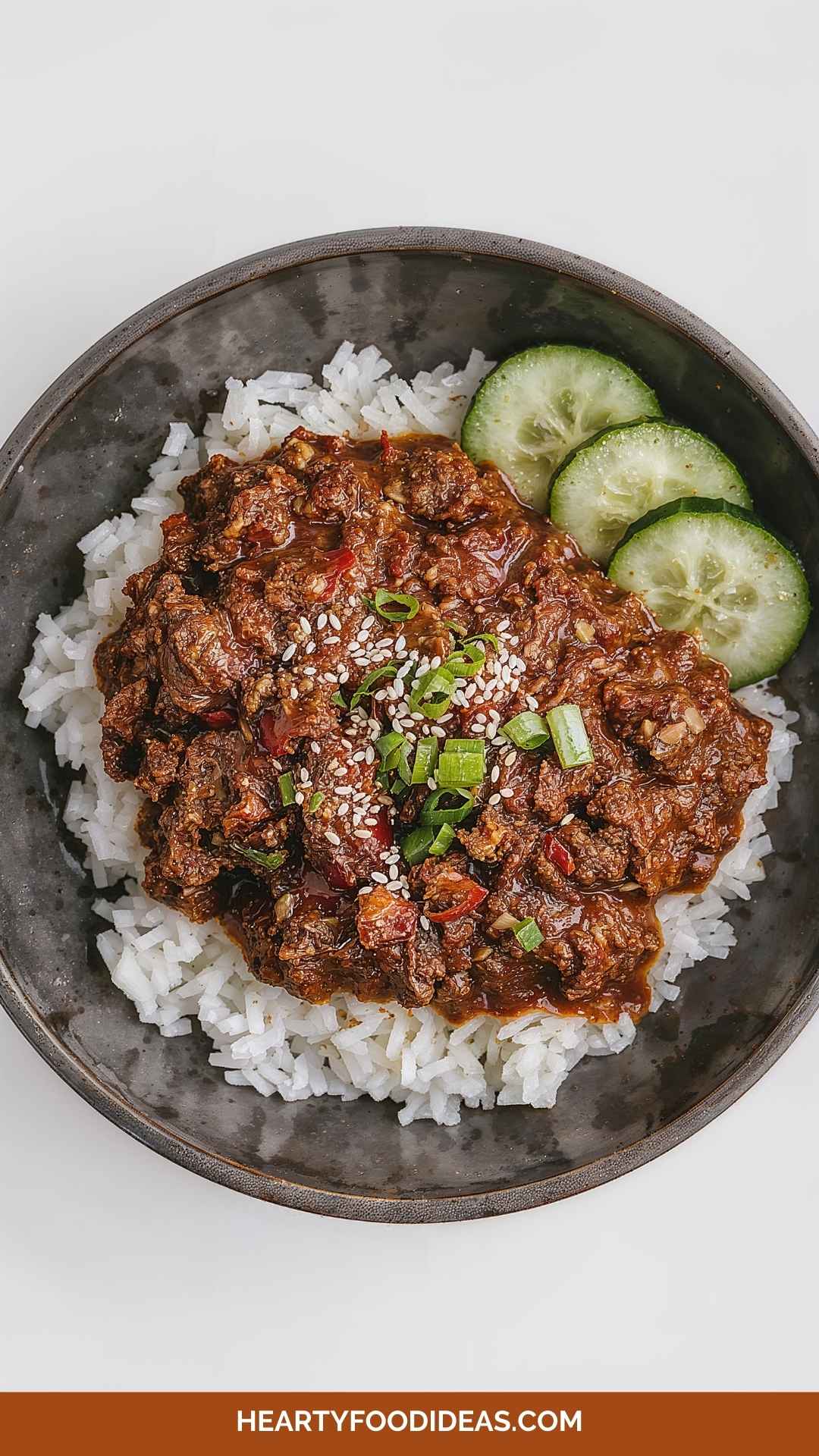When it comes to weeknight dinners, I often find myself in a bit of a culinary rut. It’s easy to fall back on the same dishes, but every now and then, I crave a burst of flavor that shakes things up. Enter the Gochujang Beef Bowl.
This dish is fantastic on its own, but it shines when paired with chilled cucumber salad or a light radish kimchi. Trust me, the crunch and refreshing flavors complement the richness of the beef beautifully.
Let me take you on a journey through this delightful recipe, sharing my tips, tricks, and everything I’ve learned along the way.
What Is The Gochujang Beef Bowls Recipe?
The Gochujang Beef Bowls are a vibrant dish inspired by Korean flavors. The star of the show is gochujang, a Korean chili paste that brings a perfect balance of sweetness, spice, and umami.
This dish combines juicy ground beef with a sweet and spicy sauce, served over a fluffy bed of rice. It’s a quick, satisfying meal that’s both easy on the wallet and the time.
The Ingredients
To create this culinary masterpiece, gather the following ingredients:
- 1 tsp (5 g) freshly grated ginger (adds warmth and brightness)
- 2 tbsp (30 ml) light soy sauce
- 1 tbsp (15 g) finely minced garlic
- 1 tsp (5 ml) toasted sesame oil (brings nuttiness)
- 3 tbsp (50 g) tomato ketchup
- 1 ½ tbsp (22 ml) mirin (a touch of sweetness)
- 1–2 tbsp (22–45 g) honey (adjust for sweet tooth)
- 2 tsp (10 g) rice vinegar
- 3 ½ tbsp (63 g) Korean chili paste (gochujang)
- ½ tsp Korean red pepper flakes (gochugaru)
- 1 pound (450 g) lean ground beef
- Toasted sesame seeds (for garnish)
- ¼ tsp freshly ground black pepper
- Steamed rice (for serving)
- 1/3 tsp sea salt
- Thinly sliced scallions (for garnish)
- 2 small onions (225–270 g), finely chopped
How to Make Gochujang Beef Bowls Recipe?
The preparation is straightforward, and the flavors meld beautifully with minimal effort. Let's break it down step by step.
Step 1: Prep Your Ingredients
Start by prepping all your ingredients. Grate your ginger, mince the garlic, and chop the onions. This will make cooking flow seamlessly. Having everything ready saves time and hassle.
Step 2: Create the Sauce
In a mixing bowl, combine the gochujang, light soy sauce, honey, mirin, tomato ketchup, rice vinegar, ginger, and garlic. Whisk this mixture vigorously until well blended. The result should be a thick, glimmering sauce that tantalizes the taste buds.
Step 3: Sauté the Onions
In a large skillet, drizzle in the toasted sesame oil over medium heat. Once it warms up, add the finely chopped onions. Sauté until the onions are translucent and aromatic, stirring occasionally. This usually takes about 3–4 minutes.
Step 4: Brown the Beef
Raise the heat to medium-high, and add the lean ground beef to the skillet. Break it apart with a spatula as it cooks. Brown the beef until it’s no longer pink, which should take about 5–7 minutes. Drain any excess fat if necessary.
Step 5: Mix in the Sauce
Pour the prepared sauce over the browned beef. Stir well to ensure every morsel is coated in that mouthwatering sauce. Reduce the heat to low and let it simmer for about 3–5 minutes. This allows the flavors to meld together beautifully.
Step 6: Serve it Up!
Now, it’s time to assemble your bowls! Serve the gochujang beef over a generous portion of steamed rice. Garnish with thinly sliced scallions and a sprinkle of toasted sesame seeds.
Notes: Tips for Success
To nail this dish every time, keep these tips in mind:
- Use Fresh Ingredients: Fresh ginger and garlic elevate the flavor profile significantly.
- Adjust the Spice Level: Begin with less gochujang if you or anyone eating prefers mild flavors.
- Quality Soy Sauce Matters: A good soy sauce enhances the overall taste. Go for a naturally brewed option if possible.
- Don’t Rush Cooking the Onions: Sautéing them properly develops their sweetness.
- Serving Temperature: Let the dish sit for a minute post-cooking to allow flavors to settle before serving.
Storage Tips
If you’re making this dish for meal prep, here are some storage best practices:
- Refrigeration: Store any leftovers in an airtight container and refrigerate. It should be good for up to 3–4 days.
- Freezing: You can freeze the beef mixture for up to a month. Just thaw, reheat, and serve.
- Rice Storage: Store cooked rice separately in an airtight container. This prevents it from becoming mushy.
The exact values may vary based on your ingredients and proportions.
Serving Suggestions
Want to take this meal to the next level? Consider these serving ideas:
- Add Sautéed Veggies: Bell peppers and snap peas can be tossed in during the last few minutes of cooking for some color and crunch.
- Use Cauliflower Rice: This is a great option if you’re looking to reduce carbs. Just sauté it with a bit of salt until tender.
- Top with Kimchi: Kimchi provides a zesty kick and pairs perfectly with the rich flavors of beef.
- Include Avocado Slices: Creamy avocado adds a delightful richness while being packed with healthy fats.
- Serve with a Side Salad: A light cucumber salad or some simple greens will help balance the dish.
What Other Substitutes Can I Use in Gochujang Beef Bowls Recipe?
Not a fan of beef or want to mix it up? Here are five substitutes you can consider:
- Ground Turkey: A lean option that works wonderfully. It absorbs the flavors well.
- Tofu: Crumbled firm tofu can replace the meat for a vegetarian version. Make sure to press it beforehand to remove excess moisture.
- Pork: Ground pork offers a richer flavor. Just note it might require some fat draining.
- Quinoa: Use cooked quinoa instead of rice for a healthier grain option. It adds a nutty flavor and extra protein.
- Chickpeas: For a plant-based option, swap beef with cooked chickpeas. They provide a delightful texture and are very filling!
Conclusion
Cooking should never feel like a chore. With simple ingredients and straightforward steps, Gochujang Beef Bowls can become your new weeknight go-to. This dish is not just a meal; it’s an experience that brings together bold flavors and comforting textures.
I assure you, once you savor a bowl of this goodness, escaping the familiar will be the least of your worries. Grab your chopsticks, dig in, and enjoy a delightful journey right in the comfort of your home. Happy cooking!
You’ll also like the following recipes!





